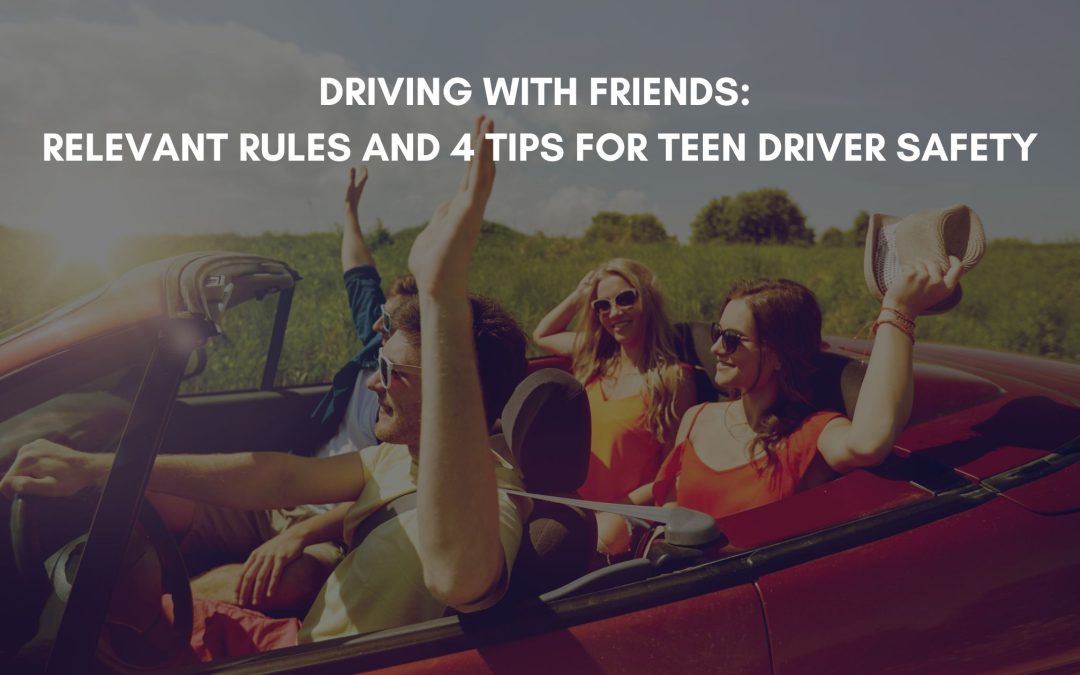At the age of 15 ½ you can start the exciting process of learning how to drive. You can enroll in a driver’s ed program and then start your behind the wheel process. If you pass all your exams and driving lessons, you can have your driver’s license as young as the age of 16. But the first license you get at 16 years old is a provisional license. But what does that mean in practice?
You or your new teen driver have the right to hit the open road with a provisional license, but there are some extra rules you need to know about. In this article, we are going to look at what a provisional license is and what additional rules exist for new drivers. Second, we’ll discuss some tips parents or guardians might want to implement when the provisional stage of driving is over and your teenager is free to drive with friends in the vehicle.
Provisional Drivers License:
Once a minor (anyone 16-18) receives their driver’s license, there are some additional rules you must follow for the first 12 months after issuance.
These are:
- You are only allowed to drive between the hours of 5:00 am and 11:00 pm.
- You cannot have passengers under the age of 20. That is, unless you have a CA-licensed parent or guardian or a CA-licensed driver over the age of 25 in the vehicle.
If a driver turns 18 before this 12-month period is over, the provisional part of your driver’s license is automatically over and you can continue on like any other driver.
As a young driver or parent, you may think this is unfair. However, according to the California DMV, “Teenagers as a group average twice as many collisions as adult drivers, while driving only half as many miles. The teenage collision rate per mile is 4 times greater than the adult driver collision rate per mile. Traffic deaths of new drivers are deadly combinations of their inexperience driving, lack of familiarity with the vehicle, and their need to push themselves and the vehicle to the limit.”
Although this may feel unfair, 12 months of solo or supervised driving practice is good for new drivers. Now let’s transition to the post-provisional license stage. Here are some safety tips for teenage drivers once they’re eligible to drive with friends.
Driving With Friends: How to Keep You New Teen Driver Safe:
At this point, your teen driver probably feels invincible behind the wheel. But as a parent or guardian, you have had the role of “chauffeur” for many years and know the risks and distractions that come with additional people in the car. If you are worried about your teen driving with friends, here are a few tips we at Your Drivers Ed Online recommend to help ease your teen into a new stage of driving.
#1: Set a Limit to the Number of People in the Vehicle
Based on your level of confidence in your teen driver, you can set a limit on how many passengers are allowed in the car at once. The more passengers, the more conversations, and the more distractions. By limiting the number to one or two, you can help your teen stay more focused on the task at hand.
As a parent, you can also increase the number of passengers every few months. If your teen gets in a fender bender, starts getting tickets, or seems to be overwhelmed every time they get back from driving, you know you may need to slow it down. However, if all goes to plan, you can continue to increase over time until the car is full.
#2 Don’t Let Your Teen Drive With Friends at Odd Times
Early in the morning and late at night are some of the most dangerous times to drive. Usually visibility is not as good and drivers can be exhausted. As a newer driver, these are the times you will need to pay extra attention to the road. Driving friends back from an event or picking someone up early adds that extra layer of distraction and difficulty to already a difficult commute.
#3 Only Drive When the Weather Permits
Driving in bad weather can be challenging enough on its own, but add multiple people to the car, and things can quickly become chaotic. Friends may cause distractions with their conversations or arguments, making it harder to pay attention to the road. They might also ask you to change the music or turn down the heat, causing you to take your hand off the steering wheel and lose control for even just a few seconds. Not to mention, if an accident happens, everyone in the vehicle is at risk. So this may be a time you want to add an extra layer of caution for your new driver.
#4 Limit the Driving Time
When your teen driver is first driving with friends, limiting the drive time to short trips is a great introduction. A trip to the market, to school, or out to dinner is a much more manageable time than driving with friends on a long trip. The more time behind the wheel, the more likely a new driver is likely to lose focus. Thus putting them at risk of accident or tickets. Also, keeping the driving time short will most likely keep your driver on familiar roads instead of on unexpected highways and new areas.
Driving with friends and others in the vehicle can be a lot of fun and something we will all do eventually. However, easing someone into this can help them build confidence on the road, keeping them safe and ticket free.

